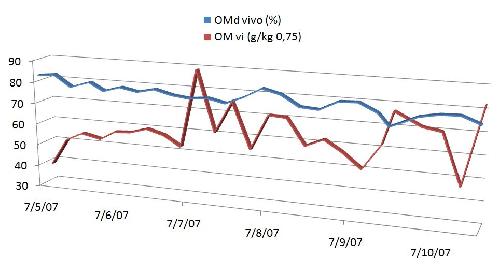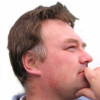Context
Herbivores grazing mixed swards have the opportunities to select different forage species, firstly to meet its maintenance requirements, secondly to ensure a production. Therefore, in an heterogeneous grassland, herbivores consume forages more or less selectively and, in this way, influence the environment allowng its opening or its invasion by woody species.
So the study of herbivore behaviour is important to keep economical performances of grasslands based systems, indeed, grazed grass is an economical nutrient if it is well managed. In order to promote the management of open land of high ecological value as new function for farmer, it is essential to define the the way to valorise such area (nature reserves, 'NATURA 2000' area…).
But how can we study the selective behaviour and voluntary intake at pasture? How can we influence herbivore choices and so conciliate grassland biodiversity and animal production? This project want to answer to those questions.
Objectives
To develop and to test easy and cheap tools to record herbivore grazing behaviour in heterogeneous grasslands.
In this framework/context, one developed and tested tool is Near Infrared Reflectance Spectroscopy (NIRS) to quantify (ingested diet) and to qualify (digestibility, chemical composition, …) intakes on mixed pastures (2 or 3 main species). On the other hand, behaviour is evaluated through herbivore localisation with GPS (Global Positioning System) and through the recording of its feeding activity based on APEC (Portable Apparatus for Behaviour Recording) technology(picture 1).
Results obtained
GPS performances Positioning a point by GPS needs the knowledge of at least 4 reference points, corresponding to satellites (n=24) which follow defined ephemeris. Calculating the distance between GPS and satellites located in their constellation and following the duration (time?) that take a wave (known speed) to link these 2 points allow to define the GPS position by triangulation.The performances of tested GPS (GARMIN 12 XL) vary following/according to the functioning mode (static or dynamic, differential correction). So that in non differential mode, a moved point can be located with a precision of about 4 m. Working in differential mode (position corrected from a known static point) improve significantly the positioning precision, this one being so less than 1 m.Likewise percentage of correct localizations is proportional to the parcel size. So that, during a trial where sheep carried GPS on their shoulders (photo 1), proportion of correct localizations increase from 83 to 94 % according to tested areas were 100 or 900m².
APEC performances APEC or jaws activity recorder is formed by a silicone ring around a muzzle and connected with a thin plastic tube to a recorder which is sensitive to the air pressure increasing during the jaw movements. APEC, according to the recording jaw movement frequency, allow to identify intake, ruminating and sleeping periods.According to our sheep results and in comparison to direct observations, ruminating period tend to be overestimated (averaged value = + 4.8 %) while sleeping period tend to be underestimated (averaged value = -19.8 %). If observation periods are shorter, it appears difficult to interpret the results. Nevertheless, in comparison to direct observations that are time consuming and only possible during the day, this technique remains very interesting to study the grazing behaviour.
Interest of NIRS analysis Estimating digestibility of the diet and level of intake of grazing animals through simple method analysis is relatively difficult. In this framework, NIRS applied to plants and/or faeces can be an interesting. Indeed, NIRS is a quick and cheap analytical method (excepted the basal apparatus acquisition) that is sufficiently accurate if appropriate calibrations are available.In this framework/context, developed calibrations allow to estimate grass quality of heterogeneous pastures with a precision similar to this /one? obtained with laboratory reference methods. For example, nutritional values of hays harvested according to agri-environmental measures (late cutting date) can be evaluated by this method.Similarly, digestibility and intake of consumed diet can be approached by NIRS applied to faeces. NIRS calibrations allow to predict respectively digestibility and voluntary intake with a precision (error standard of estimation) of 2.5 % and 1.3 g/kg of live weight. Figure 1 illustrates the use of this tool. Thus, while the digestibility of ingested grass remains constant throughout the whole grazing season, voluntary intake increases gradually in spring, with the grass growth, then decreases during the summer before rising again in relation with autumnal grass regrowth.The knowledge of the both parameters can alow to predict the nutritive value of diet and to improve the management of natural resources.In an other application, diet composition in term of proportion of legumes/pulse crops and grass can be estimated by NIRS applied to plant or faeces.Combining GPS, APEC and NIRS with a vegetation map could be allow to determine what does the animal (APEC data), where he does it (GPS data) and how he select the vegetation (NIRS data). This theoretical development still must be tested in grazing situation.
Contribution
The Farming Systems Section is the project leader. It is occupied of the establishment and the follow-up of the project, as the analysis of the results.Partners
Natagora.
Centre de Recherche de la Nature, des Forêts et du Bois.
CRAW off coordinator
Ir. DECRUYENAERE Virginie
CRA-W - Section Systèmes agricoles
Rue de Serpont, 100
B-6800 Libramont
Tel : + 32 (0) 61 / 23.10.10
Fax : + 32 (0) 61 / 23.10.28
Email : decruyenaere@cra.wallonie.be
Funding
- CRA-W - Walloon Agricultural Research Centre





